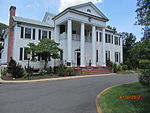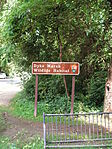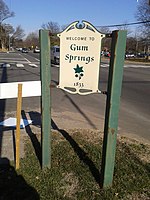Tauxemont Historic District

Tauxemont Historic District is a national historic district located near Alexandria, Fairfax County, Virginia. It encompasses 71 contributing buildings, 1 contributing site, and 1 contributing structure in a World War II-era subdivision near Alexandria. In 1941, developer Robert Davenport and architect Alexander Knowlton as part of 20 original families created a cooperative and purchased the land for housing development. It was developed in three sections between 1941 and 1955. The basic Tauxemont house is a cinder block one-story, side-gable-roofed rectangular starter house. Included in the district are 10 Lustron houses. Some houses have additions designed by architect Charles M. Goodman, who Davenport had been working with on nearby Hollin Hills.It was listed on the National Register of Historic Places as a historic district of state-level significance in 2006.
Excerpt from the Wikipedia article Tauxemont Historic District (License: CC BY-SA 3.0, Authors, Images).Tauxemont Historic District
Bolling Drive,
Geographical coordinates (GPS) Address Nearby Places Show on map
Geographical coordinates (GPS)
| Latitude | Longitude |
|---|---|
| N 38.743611111111 ° | E -77.053888888889 ° |
Address
Bolling Drive 7918
22308
Virginia, United States
Open on Google Maps











